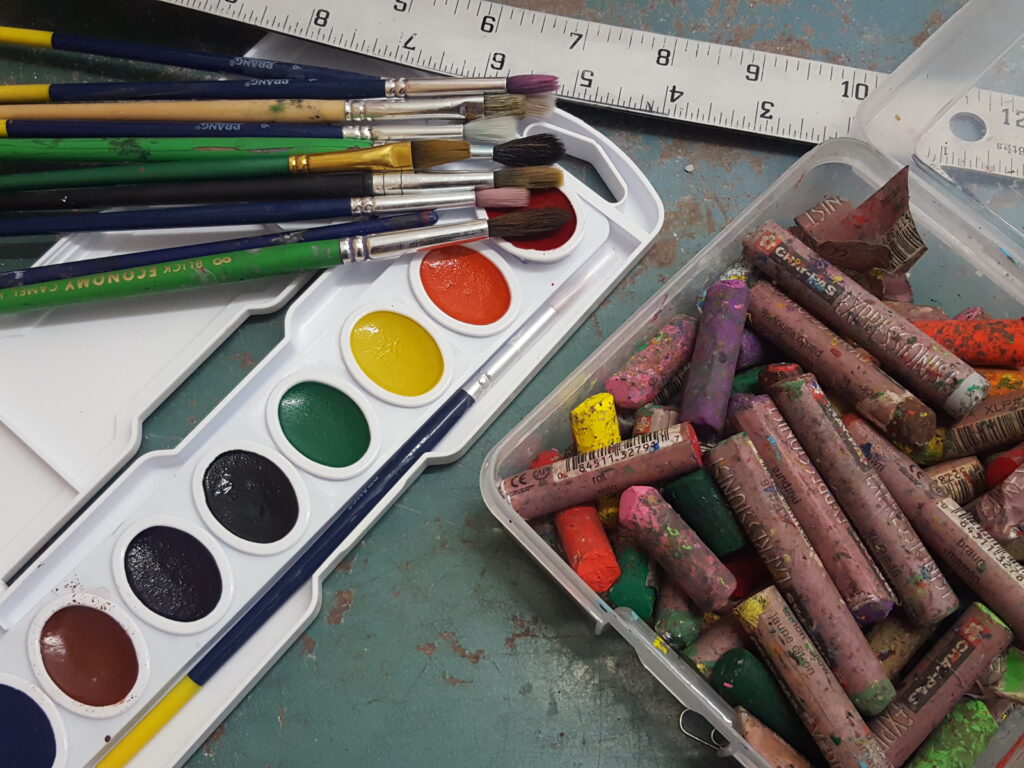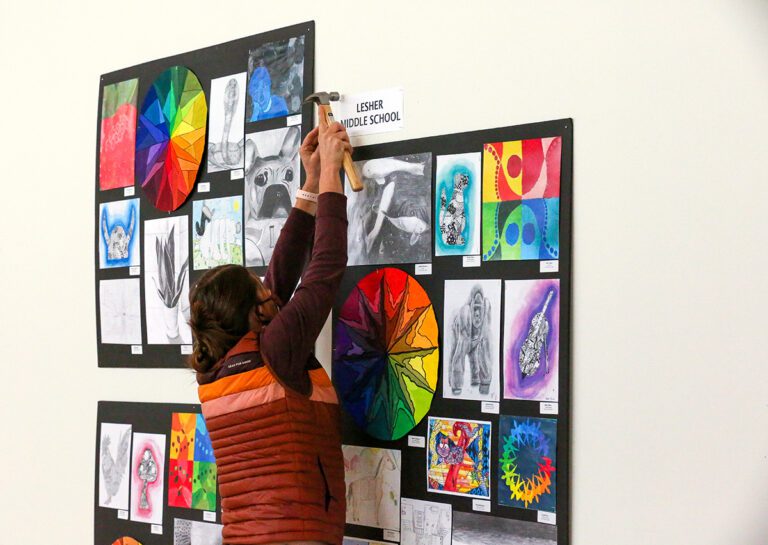This past September, I started teaching middle school art. In my 16 years of teaching, I taught only at the elementary level. Although I taught in a variety of schools, I felt I needed a change. So I left a job I loved for 10 years to take a new job in a local middle school. Several friends told me I was crazy. I wondered if I might be, too. But I knew that I needed a change, so I jumped.
Here are some valuable lessons I learned from switching schools.

1. It’s important to face your fear of change.
I taught from a cart at five schools my first few years teaching. I dealt with all the discomfort that comes with being a new teacher. I weathered those growing pains. I faced my fears every day.
When I learned my dream job was available in 2006, I jumped at the chance. This school was perfect for me in so many ways, and I was thrilled when I got the position. I loved every second of my time with my sweet students. I loved it so much, I stayed for 10 years.
Over time, though, I felt I was finding my work less challenging. Was I still learning and growing? I feared I was becoming complacent, that I might be going through the motions. Yet, when I considered leaving, fear would creep in. Would I like someplace else? What if leaving was the wrong choice? The idea of starting over was scary.
Once I realized the fear of discomfort and failure was keeping me where I was, I knew it was time to make a change.
2. Changing schools exposes you to a wide range of new ideas and attitudes.
Every school is different. Each group of students comes with its own challenges and strengths. Every community has its own unique cultural qualities.
When you stay in one place for a long time, it’s easy to forget that things might be done differently elsewhere. There is a lot to be learned from exposing yourself to a new school community.
When you change schools, you also bring your own fresh ideas to your new community. You provide a different perspective, allowing you to contribute in new ways.
3. It helps you to grow and learn new skills.
When you switch schools, everything is new. Although this means everything is uncomfortable for a while, it also means there is a lot to learn.
My first couple of months in middle school were more challenging than I could have imagined. I felt like a first-year teacher again, trying to make sense of everything all at once. It was overwhelming, to say the least! But it was also exciting because I was learning new things every day.
Middle school students come with a whole new set of challenges. I had to figure out how to meet my students where they are. This required me to develop new skills and approach problems in a new way.

4. It tests your understanding of yourself as a teacher.
Over my many years of teaching, I developed my teaching identity. I saw myself as a certain type of teacher, who did certain types of things. I worked hard to achieve my National Board Certification and my master’s degree. I mentored many pre-service teachers. I wrote grants for my school. I presented at conferences.
I always worked hard and sought out new challenges. Yet, I hadn’t challenged myself as a teacher in a while. I wondered if I was really a good teacher, or if I was just comfortable teaching my students in my school.
By switching schools, I was forced to test myself. Did all those years of hard work really help me refine my craft? Would I still be a “good’ teacher in a much more challenging environment? Would I be able to adjust to middle school easily?
It’s easy to think you’re good at what you do if you do the same thing forever. It’s another thing to throw yourself into an uncomfortable place to see if any of your skills transfer.
After several months in my new school, I am happy I made a change. Every day is still a challenge, but it is getting more manageable every day. I am growing and learning right along with my students. And there is a lot of value in that.
Have you changed schools?
What did you learn from switching schools?
Magazine articles and podcasts are opinions of professional education contributors and do not necessarily represent the position of the Art of Education University (AOEU) or its academic offerings. Contributors use terms in the way they are most often talked about in the scope of their educational experiences.





